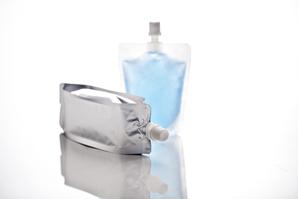By Kate Tilley
CORRESPONDENT
Published: November 11, 2014 1:53 pm ET
Updated: November 11, 2014 2:33 pm ET

Image By: Amcor Ltd.
Amcor Ltd. is securing a supply of Barex resin for its film needs while also pushing development of its own alternative.
MELBOURNE, AUSTRALIA — Australian packaging company Amcor Ltd. is developing its own films that do not use Barex resin in the wake of an announcement its Barex supplier will close its Lima, Ohio factory early next year.
In the meantime, the Melbourne-based manufacturer is working on a deal with the supplier, Ineos Group, based in Rolle, Switzerland, for a continued source of Barex-brand polyacrylonitrile (PAN) resin to meet its customers’ needs for the next three years.
John Murray, Amcor executive general manager of corporate affairs, told Plastics News the priority is to secure sufficient Barex PAN to meet immediate needs. Amcor is working with its customers, Ineos and film converters on a technical, legal and commercial framework that will ensure supply until its replacement film is commercialized.
Murray said they hope to finalize a deal “in the next week” but will not comment further until the deal is reached.
He did not specifically respond to Plastics News’ query on whether Amcor would consider buying the Ohio factory, nor would he say what quantity of resin was involved in the three-year supply, nor its cost.
“Commercialization of Amcor’s own films is being accelerated to ensure the fastest qualification well in advance of the end of the three-year supply of Barex,” Murray said. “Our films will provide the same inert properties as Barex, and have been developed to provide improved sealing properties, lower extractables and a more sustainable manufacturing process compared to Barex.”
Colin Reed, global pharma marketing director at Amcor Flexibles Europe and Americas, said in a news release: “Ensuring global security of supply for our customers is Amcor’s key priority. Due to the critical nature of pharmaceutical and medical applications, it is our responsibility to make sure business continuity is maintained.”
He said the new film has already undergone favorable initial trials, and Amcor will give customers samples of the film and laminates before the end of the year so they can start the qualification process.
Amcor uses Barex in manufacturing packaging for pharmaceutical, medical and food products. Murray said its inert chemical properties provide a superior barrier for sensitive and aggressive products, such as nicotine and analgesic patches, and animal health products.
More Barex alternatives
Meanwhile, two other barrier film companies announced that they have developed high-barrier materials that are alternatives to Barex.
King of Prussia, Pa.-based Tekni-Films, a division of Tekni-Plex Inc., said it has commercialized a line of Barex-alternative specialty films, for thermoformable, heat-sealable packaging applications.
“Many of these films were commercialized over the past year. In light of the recent announcement that Barex manufacturing operations will be shut down, we want the industry to know that the desired performance attributes can still be met with our cost-effective alternative materials,” said David Andrulonis, vice president and general manager, in a news release.
The films include polyethylene, polypropylene and Aclar polychlorotrifluoroethylene inner and outer layers, coupled with either ethylene vinyl alcohol copolymer and/or cyclic olefin copolymer for enhanced barrier properties..
Last week, Addison, Ill.-based Rollprint Packaging Products Inc. announced that it was expanding its Exponent-brand high-barrier structure film line to include a new material with a combination of the company’s ClearFoil barrier-coated polyester and a coextruded non-crystalline polyester sealant.
“With Ineos’ recent announcement that it is exiting the Barex acrylonitrile-methyl acrylate copolymer business, we wanted to let the industry know immediately that there is an alternative clear, high-barrier structure,” said Dwane Hahn, vice president sales and marketing, in a news release.
The company said potential applications for the new material include the transdermal patch, e-cigarette and diagnostics markets.
| 